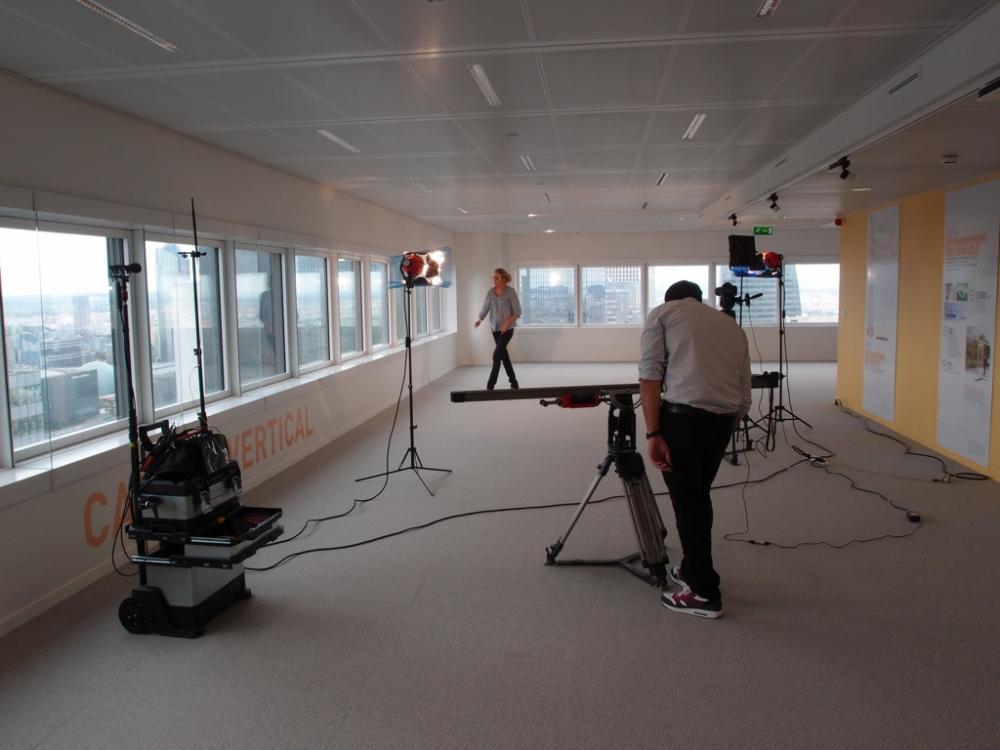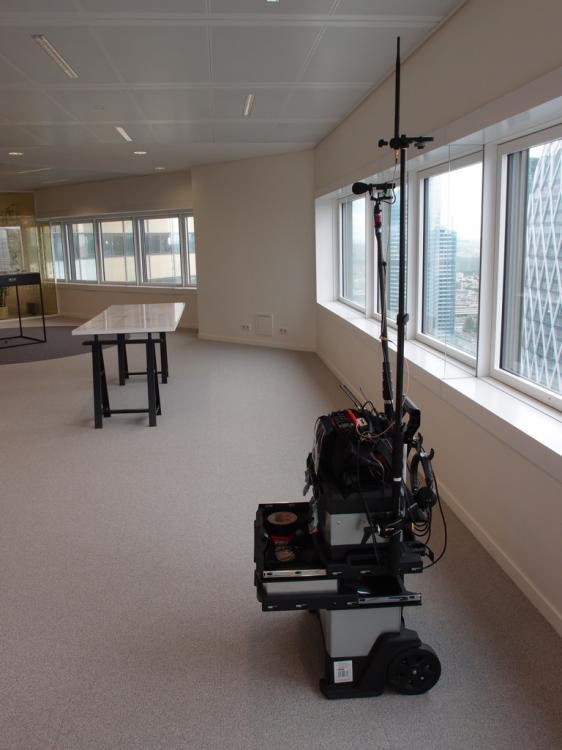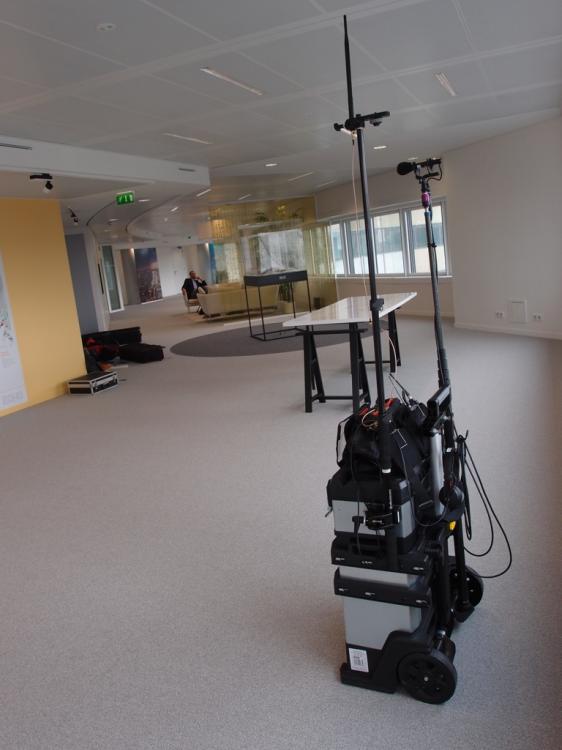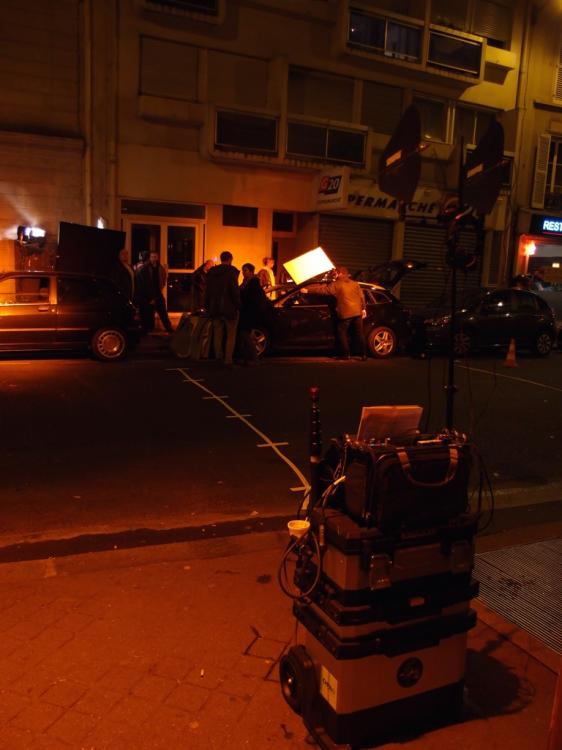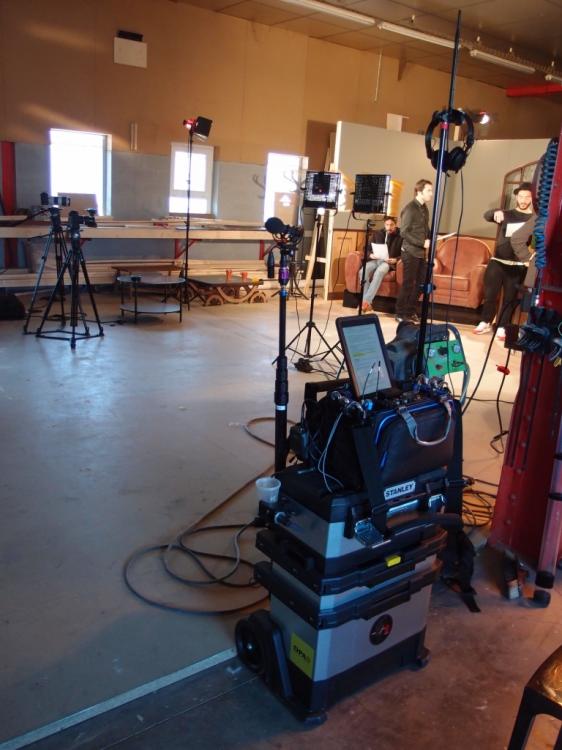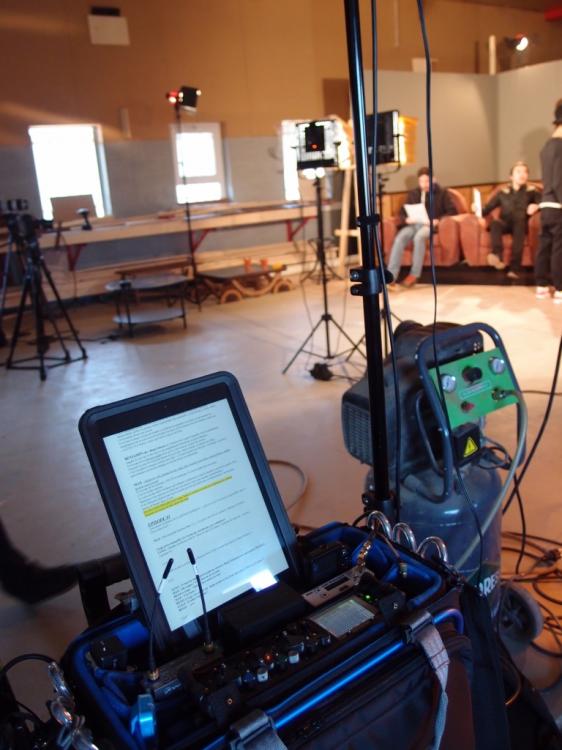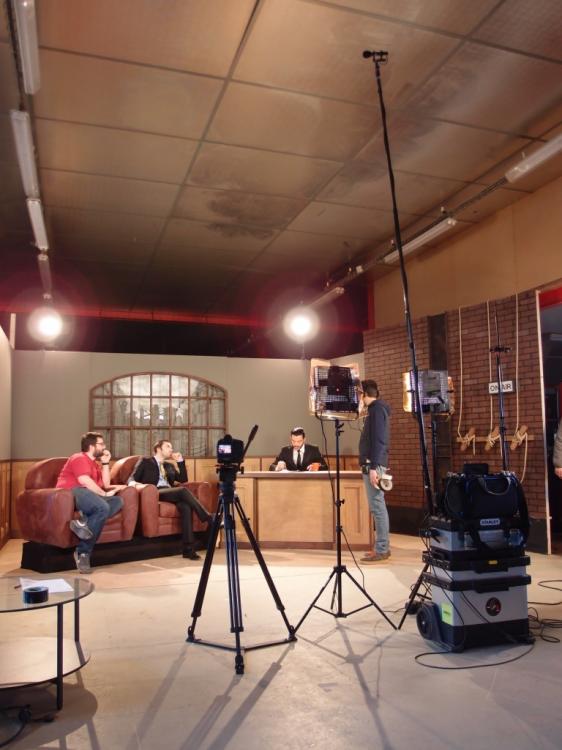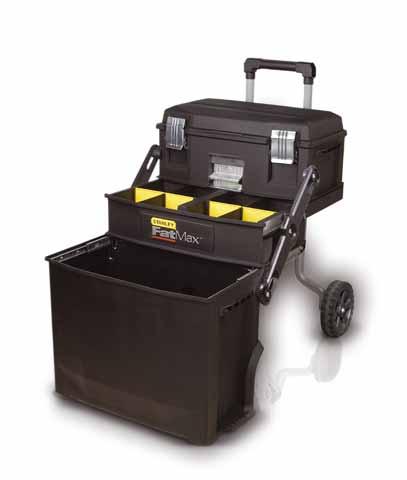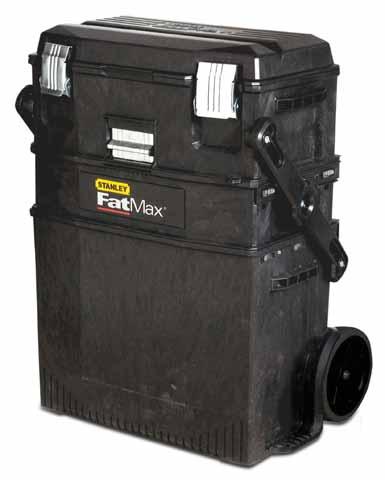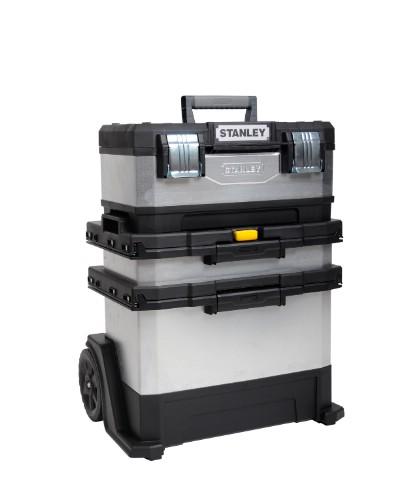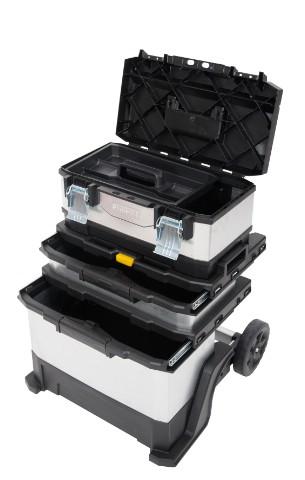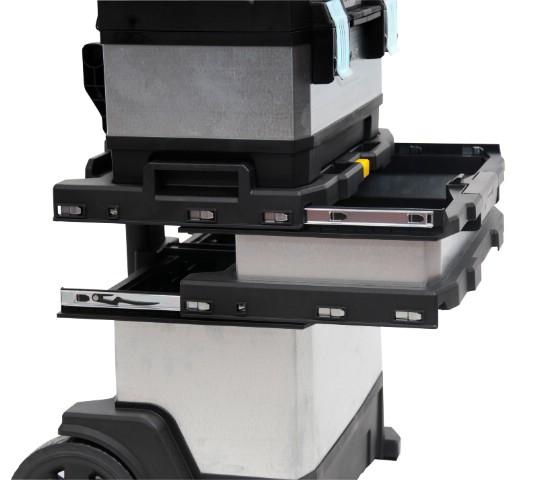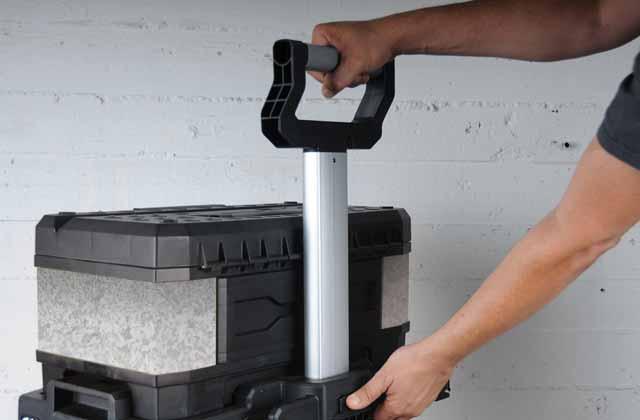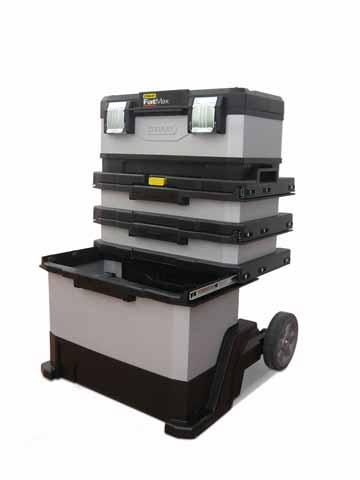-
Posts
15 -
Joined
-
Last visited
About Bax
- Birthday 11/17/1976
Contact Methods
-
Website URL
http://www.yannisbaxevanakis.com
Profile Information
-
Location
France
-
Interests
Music, motorcycle, ,DIY, electronics, voyages
-
About
His dedicated to the creation of emotional and evocative sound prints through the creative use of high quality audio gear. He aims to create sound that communicate the directors vision and always look-out for the best possible result.
-
Interested in Sound for Picture
Yes
Recent Profile Visitors
1,530 profile views
-
Hi Darryl, I've just send you an email ;-) PS: What is the length of the coax cables coming with the kit ? Bax.
-
The main modifications were: 1: Doing solid attachement of the top case to the main body 2: Attaching Manfrotto clamps to the sides of the top case with internal reinforcement 3: Changing the original "all plastic made" wheels with a far more solid (and handy) ones with flat free solid rubber tire. 4: Attaching Manfrotto cable or headphone holders 5: Attaching a dual boom holder système (Quickfist) Thanks for the inspiration to all and hope this will inspire others ;-) Some "in condition" photos :
-
Hi to all fellows of this topic ;-) I have checked this topic a will ago finding my self working to a very similar type of case (Stanley) ! In fact, the inspiring model for me has been the "Stanley Cantilever Fatmax" model. This model finally wasn't my final choice for two main reasons: 1: Not as hardened and secure as i wanted to be. 2: The cantilever opening system needs some "space" around the case to be fully opened... I finally choose the "Stanley Bi-Composite" case made of galvanized steel, aluminium and of coarse... plastic ! There are to types available apparently, with one or two drawers. I choose the one drawer for the more compact size and lightweight profile. I took the necessary time finalizing this project and had already the opportunity to do some field testing...
-

Arri Alexa TC drift by up to 7 frames
Bax replied to pinkywinkieOZ's topic in Cameras... love them, hate them
Is this feature common to all Sound Devices TC capable recorders ? Thanks Matt for this info ;-) -
I had this warning about the date too once... but the date was fine. ? I just said, OK and had no problem since then...
-
Nick, Siddho, This are my observations, - A hard reset seems to work for the keyboard issue. - I think though that a "factory default" procedure being the best solution cause the new firmware adds more functions... This can be clearly observe comparing the .XML files generated. Thanks. Bax.
- 5 replies
-
- Sound Devices 633
- v1.04 firmware
-
(and 1 more)
Tagged with:
-
I would try that and see. Thanks Nick.
- 5 replies
-
- Sound Devices 633
- v1.04 firmware
-
(and 1 more)
Tagged with:
-
Hi there, After my recent update to the v1.04 SD firmware for my 633 mixer, my Rii wi-fi keyboard dont responds any more... Does anybody out there had this kind of problem with this keyboard or other model ? Does this problem concerns the SD664 mixer too ? Thank you in advance for your help. Bax.
- 5 replies
-
- Sound Devices 633
- v1.04 firmware
-
(and 1 more)
Tagged with:
-
studiomprd: this is not about devices, but about the technologies... maybe, maybe not... studiomprd: maybe you have unreasonable expectations? maybe, maybe not... It fits all i agree I didn't have the opportunity to check this 2.4GHz bleed with other audio mixer manufacturers yet because i mostly use my own gear. I will try to do that in the near future. It seems that Zaxcom are aware of this particular problem with the SD633 mixer. (mail from the Zaxcom support) Jeff, studiomprd, i realize that this is probably not about a gear only issue and i strongly believe that, now-days, when messing 2.4GHz technology with RF and DIGITAL audio mixers into the smallest possible bag, things can be easily out of control. I can understand the necessity for time and support for a hi tech product to achieve maturity but in the other hand, all this gear is made for Audio bag life and i expect from them to work flawlessly, as simple as that. mradlauer, of course i agree with you
-
Hi there, I would like here to share with you my experiences working with the combination of the SD633 mixer and the IFB200 Transceiver and especially the interference issues i had with. First of all, i must say that the SD633 and IFB200 are fantastic tools. The engineering behind the SD633 is huge as is the potential of the IFB200. But, the combination of this two devices is not as stress-free as we could most of as expect. Indeed, it is obvious to me today that, the SD633 and the MixPreD (witch are the two only mixers i tested until now) are not very tolerant in 2.4GHz radiations... The gear is sitting into a Petrol PS607 bag one next to each other with only the soft orange separator between them. (Photo) The kind of noise you can here is like digital disturbances of a GSM phone. It seems that the SD633 is very sensitive to the proximity AND direction of the omni 2.4GHz antenna of the IFB200. This noise is recorded when you press REC. This noise is present in the input stages only. The audio example is the Mix-L out, antenna pointing the Gain (@12 o'clock) of CH1, fader @ 12 o'clock. This phenomena is amplified when: 1: When you pointing the 2.4GHz antenna to the Gain or the fader pots 2: When you are on a closed reflective space 3/ When you are close to a reflective surface You can minimize this phenomena by: 1: Decrease the transmission power of the IFB200 (there is an issue about that, that you can read on a special topic) 2: Move the antenna far away from the mixer (the solution i adopted) 3: Chose open spaces to closed ones... ;-) In practice, you have to be always very careful about that since this noise can come and go... Not very reassuring i suppose... For me, moving the antenna was the only serious option. For that, i used a 15cm extension of a SMA-M to SMA-F coax cable. I have a 50cm extension too for a harness installation of the antenna. Hope this will help. Cheers.
-
Brian, I don't want to extend to this post the interference issue between the IFB200 and SD633 to much. I will post especially about that, soon. But briefly, i am talking about some digital kind of disturbances i receive from the SD633. It seems that the SD633 is very sensitive to the proximity AND direction of the omni 2.4GHz antenna of the IFB200.
-
Jack, Did you try to do the test of the distance ? 1: Try to step down the power to the min (Lev 1) 2: Check the max distance (this should be something like 8-10 meters) 3: Reboot 4: Re-check the max distance (this should be now back to the max, 40+ meters)
-
Hi there, I'm writing this post because having recently been confronted to interference problems with my SD633 and IFB200 combination due to the 2,4GHz technology of Zaxnet (i would soon post a topic about that), i found this: If you try to change the IFB transmission power from the extended menu to anything but "7" (which is the Max level) coming back to the main menu and/or reboot the device cancels this change !? Means that, the max IFB transmission power is re-loaded again. But, coming back to the transmission power menu (advanced menu), the number don't change to "7" but still remains the one you left before… For exemple, if i change the IFB transmission power from "7" to "2". This, gives me something like 10 meters maximum open space reach. At this moment i have much less interference problems of coarse, now if i exit extended menu and/or shut down the IFB200 and power up it again, i can now be 50 meters away and i can also welcome all my interference problems back... Now, if i go back to the IFB transmission power menu, i found power level remained "2" but, if i change it to… lets say "1" or "3" the TX power is down again to reflect this change ! The actual IFB200 firmware is: v1.64 but this issue was revealed (by me at least) in firmware 1.58 allready. Zaxcom are aware since then. Hope this will help.
-
Hello everybody, I'm a new comer to this forum and glad to make my first contribution. I've been impressed from the quality and quantity of the informations going thru this site and hope that this topic would help DIY users avoid my interrogations about phase issues i went thru making my own 2xTA3F to TA5F inject cable feeding my Zaxcom IFB200. So, despite the wiring diagram for the analog input presented on the manual (page20) of the Zaxcom IFB200 here is the one you should follow: - Pin2 of the Out of mixer XLR (or TA3) L goes to: Pin 2 of TA5F on IFB200 - Pin3 of the Out of mixer XLR (or TA3) L goes to: Pin 3 of TA5F on IFB200 - Pin2 of the Out of mixer XLR (or TA3) R goes to: Pin 4 of TA5F on IFB200 - Pin3 of the Out of mixer XLR (or TA3) R goes to: Pin 5 of TA5F on IFB200 You will find an attach File of the page 20 of the Zaxcom IFB200 manual. I posted my remark to the Zaxcom team a few days before... They will do the necessary changes soon. Here is the response: The IFB100 is wired with hot going to pin 5 of the TA5 so it is correct in that manual. In the IFB200 – we went with what is becoming the industry standard of pins 2 and 4 being hot – hence the error in the manual. I guess when the 200 manual was written there was some confusion with the wiring in the 100 manual. I did check the QRX manual and that is indeed correct. Also FYI the QRX, IFB 100 and IFB 200 has a option in the menu to reverse the phase of channel 2 – so essentially any cable you have can work without a phasing issue.






